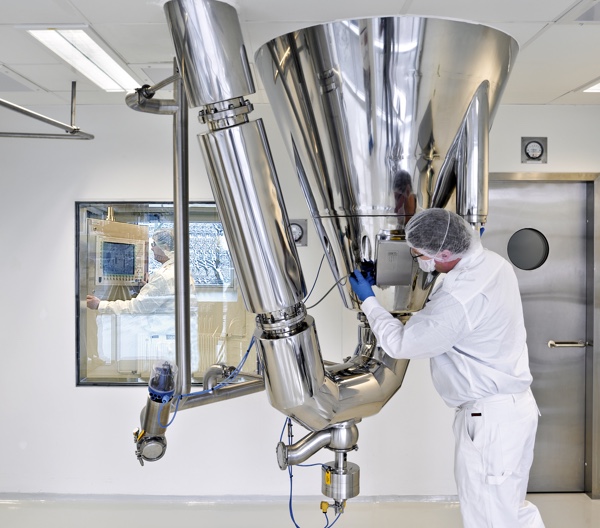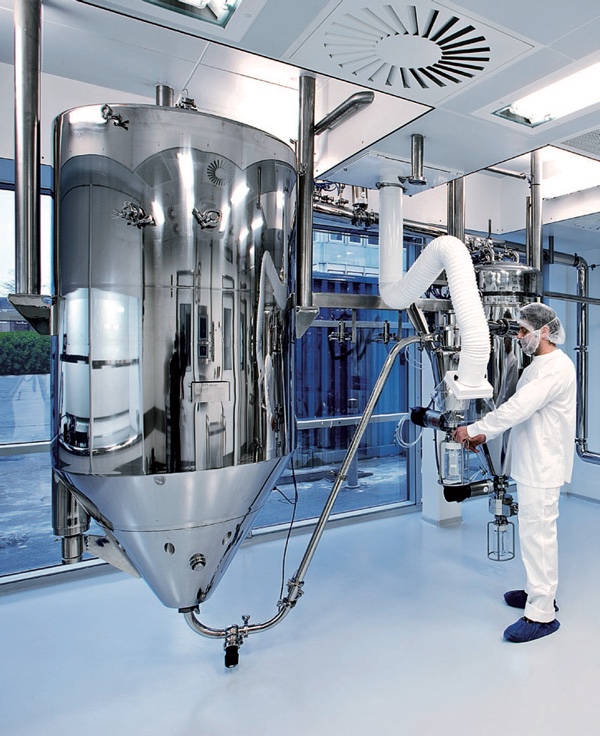Despite being very commonly used in the food and chemical industries for decades, spray drying has, until quite recently, only been a niche technology in pharmaceutical manufacturing. In fact, until the 1980s, drug companies tended to favour easy-to-process molecules — so called BCS 1 substances — that inherently demonstrated good solubility and permeability properties.
When the medical community’s focus shifted to diseases such as AIDS, however, poorly soluble molecules could no longer be ignored. Providing the ability to form solid dispersions, spray drying appeared to offer a solution. Yet, even though industry was now able to enhance the solubility and, consequently, the bioavailability of BCS 2 drugs, some remained unconvinced.
Concerns centred on the notion that the high temperatures applied during spray drying would denature delicate pharmaceutical substances, notwithstanding the fact that many proteins — and even enzymes — are successfully spray dried in the food industry!
Tip of the iceberg?
It is certainly true that, when entering the drying chamber, inlet gas temperatures are often significantly higher than 150 °C during processing, but this actually results in the rapid evaporation of liquid rather than any significant increase in the temperature the API senses. We see this phenomenon almost every day: a glass containing ice cubes and water will have a temperature of 0 °C — independent of the ambient temperature — until the very last piece of ice melts. Only then will the temperature of the water start to rise. Even in warmer conditions, the ice might melt faster … but the water temperature remains at 0 °C until it does. The same is true for spray drying. After atomisation, the droplets are exposed to the previously mentioned high gas inlet temperature — providing energy for evaporation — and the simultaneous cooling of the gas. As the liquid rapidly evaporates from the droplet surface, a solid particle forms and falls to the bottom of the drying chamber. Yet, only when all the free liquid — the end of zero order drying — has evaporated will the temperature of the droplets start to rise. This only happens, though, in a properly designed spray drying process at conditions that are similar to the outlet temperature and with a residence time — even in a large spray dryer — of less than 30 seconds.
Gentle processing
During the late 1990s, several companies endeavoured to produce inhalable insulin. To deliver the active to the required site within the lung, a particle size of 5 µm or smaller was needed. Spray drying was identified as the gentlest way to achieve this. Although insulin begins to degrade at temperatures higher than 40 °C, it was possible to overcome this hurdle with well-designed spray drying processes. As it happens, early marketing activities for inhalable insulin were terminated for commercial reasons; but, these developments certainly paved the road for further work on lung-targeted drugs and other large molecules.

Size matters
In the meantime, industry has continued to focus on small molecules for two main reasons: first, as noted above, the improved solubility/bioavailability and secondly, the huge degree of particle form control that spray drying offers.
When expensive drugs are produced in relatively small quantities, yield becomes much more important than throughput. At the same time, ingredient price is less critical. For mass-produced products (billions of tablets per year, for example), the most cost-effective way to make them is to use cheap ingredients with poor physical characteristics and enhance those properties with steps such as wet granulation.
For high-value products, the opposite is true. Every ingredient should have optimal physical properties to facilitate and expedite secondary processing. A key development here is continuous dry blending wherein the formulation is fed directly into a tablet press. It’s lean processing … but a prerequisite is that all the materials are free flowing and can be delivered by loss-in-weight feeders. And, although most common excipients are commercially available with the right qualities, the incorporation of the active pharmaceutical ingredient (API) can still be challenging. Spray drying not only addresses these issues, it also blends seamlessly into the prevailing trend towards overall continuous manufacturing in the pharmaceutical industry.
By nature, spray drying is a continuous process and is designed to offer both high productivity and uniform product quality during sustained periods. Spray drying can also help to better commercialise your discoveries by providing increased bioavailability, modified release and taste masking, aseptic production, products for inhalation and direct compressibility.
The spray drying process
As a technique, spray drying consists of three basic stages:
Atomisation
A liquid feed stock is “atomised” into droplets using a nozzle or rotary atomiser. Nozzles use pressure or compressed gas to atomise the feed whereas rotary atomisers employ an atomiser drum rotating at high speed
Drying and particle formation
Guided by a gas disperser, hot process gas (air or nitrogen) is brought into contact with the atomised feed, initiating evaporation. As the liquid rapidly evaporates from the droplet surface, a solid particle forms and falls to the bottom of the drying chamber. The balance between temperature, flow rate and droplet size controls the drying process
Recovery
The powder is recovered from the exhaust gas using a cyclone or a bag filter. The whole process typically takes no more than a few seconds.
In summary
This ultrafast and gentle drying technology offers unique ways to define particle characteristics and enable the development of novel formulations and delivery systems that were previously unattainable. And, because spray drying is a continuous process, it offers both high productivity and uniform product quality during sustained periods.

With a long history of serving the pharmaceutical industry, GEA can supply spray dryers for R&D and product development, as well as modules, equipment and complete lines for cGMP, continuous and highly contained production, for excipients, APIs and finished products. In our test facilities around the world, including the world’s largest and most advanced spray drying technology centre in Copenhagen, Denmark, we have 75 pilot plants where we can process your formulation — be it an emulsion, a suspension or a solution — into a dry product.
A pioneer in all aspects of spray drying with more than 10,000 contracted and installed plants worldwide, we can help you to choose the most suitable equipment, assessing each project on its individual needs and tailor the process and the spray dryer to match your specific requirements.
GEA has developed a dedicated series of pharmaceutical spray dryers. The PharmaSD (PSD) dryers have been designed using standard modules that incorporate all the features required for cGMP production in the drug manufacturing environment. Available in a range of sizes (1–6), PSD dryers offer capacity ranges from 100 to 5000 kg/h of drying process gas.





